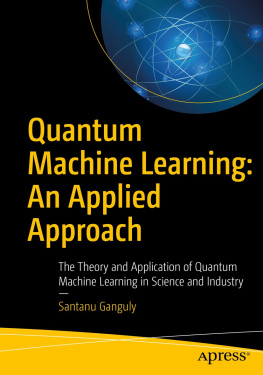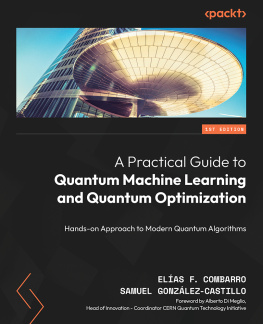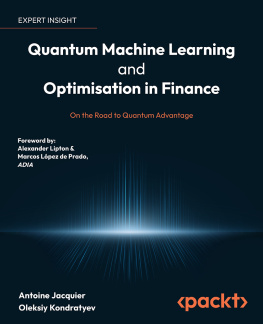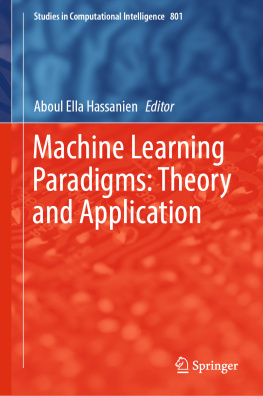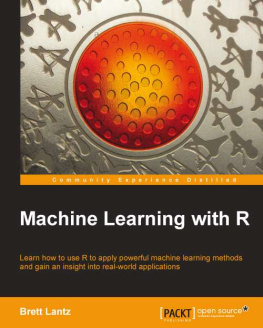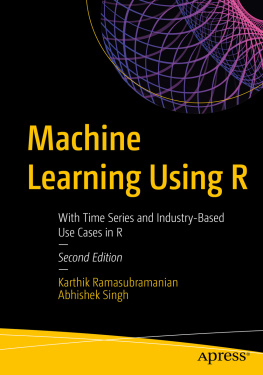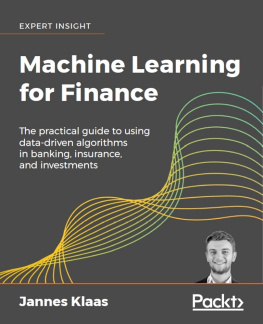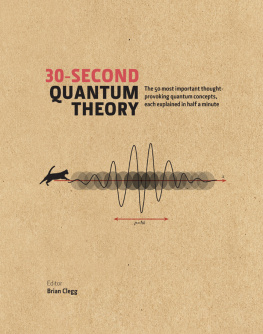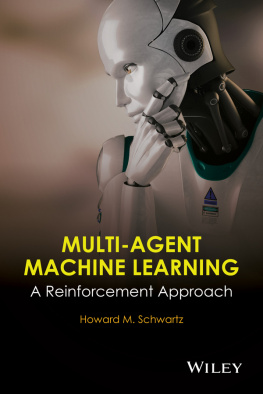Santanu Ganguly - Quantum Machine Learning: An Applied Approach. The Theory and Application of Quantum Machine Learning in Science and Industry
Here you can read online Santanu Ganguly - Quantum Machine Learning: An Applied Approach. The Theory and Application of Quantum Machine Learning in Science and Industry full text of the book (entire story) in english for free. Download pdf and epub, get meaning, cover and reviews about this ebook. year: 2021, publisher: Apress, genre: Children. Description of the work, (preface) as well as reviews are available. Best literature library LitArk.com created for fans of good reading and offers a wide selection of genres:
Romance novel
Science fiction
Adventure
Detective
Science
History
Home and family
Prose
Art
Politics
Computer
Non-fiction
Religion
Business
Children
Humor
Choose a favorite category and find really read worthwhile books. Enjoy immersion in the world of imagination, feel the emotions of the characters or learn something new for yourself, make an fascinating discovery.
- Book:Quantum Machine Learning: An Applied Approach. The Theory and Application of Quantum Machine Learning in Science and Industry
- Author:
- Publisher:Apress
- Genre:
- Year:2021
- Rating:4 / 5
- Favourites:Add to favourites
- Your mark:
- 80
- 1
- 2
- 3
- 4
- 5
Quantum Machine Learning: An Applied Approach. The Theory and Application of Quantum Machine Learning in Science and Industry: summary, description and annotation
We offer to read an annotation, description, summary or preface (depends on what the author of the book "Quantum Machine Learning: An Applied Approach. The Theory and Application of Quantum Machine Learning in Science and Industry" wrote himself). If you haven't found the necessary information about the book — write in the comments, we will try to find it.
Santanu Ganguly: author's other books
Who wrote Quantum Machine Learning: An Applied Approach. The Theory and Application of Quantum Machine Learning in Science and Industry? Find out the surname, the name of the author of the book and a list of all author's works by series.
Quantum Machine Learning: An Applied Approach. The Theory and Application of Quantum Machine Learning in Science and Industry — read online for free the complete book (whole text) full work
Below is the text of the book, divided by pages. System saving the place of the last page read, allows you to conveniently read the book "Quantum Machine Learning: An Applied Approach. The Theory and Application of Quantum Machine Learning in Science and Industry" online for free, without having to search again every time where you left off. Put a bookmark, and you can go to the page where you finished reading at any time.
Font size:
Interval:
Bookmark:
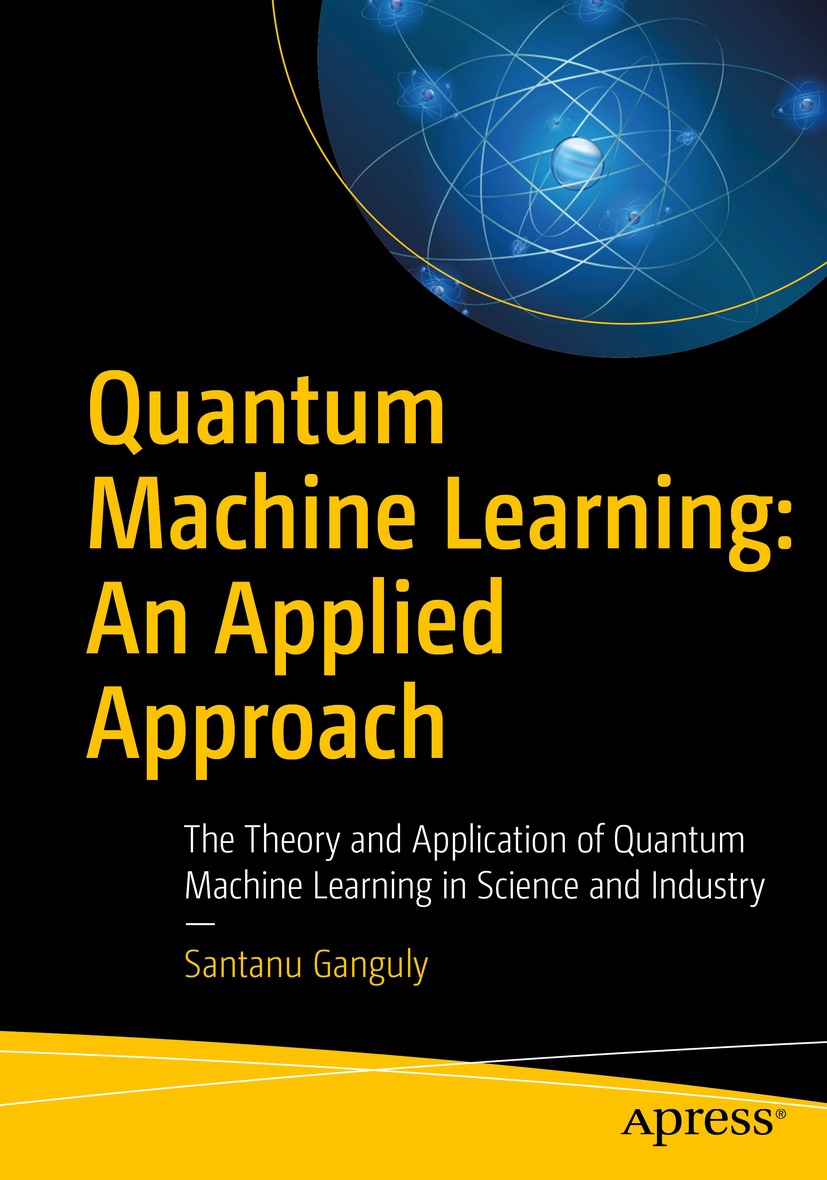

This Apress imprint is published by the registered company APress Media, LLC part of Springer Nature.
The registered company address is: 1 New York Plaza, New York, NY 10004, U.S.A.
I dedicate this book to
Deben and Rishika, for being the lights of my life
Sigrid, for being an unwavering source of support for the last 17 years
My late mother, Subhra Ganguly, my now late father, Samir Kumar Ganguly, my late mother-in-law, Jeanne Van de Velde, and my father-in-law, Jean Van Lierde
I shall be telling this with a sigh
Somewhere ages and ages hence:
Two roads diverged in a wood, and I
I took the one less traveled by,
And that has made all the difference.
Robert Frost, 1916
Quantum machine learning (QML) is a cross-disciplinary subject made up of two of the most exciting research areas: quantum computing and classical machine learning. Quantum computing and machine learning are arguably two of the hottest topics in science and industry. Quantum computation and quantum information have appeared in various areas of computer science, such as information theory, cryptography, emotion representation, and image processing because tasks that appear inefficient on classical computers can be achieved by exploiting the power of quantum computation. Novel methods for speeding up certain tasks and interdisciplinary research between computer science and several other scientific fields have attracted deep scientific interest to this emerging field.
The growing confidence in the promises harbored by quantum computing and machine learning fields has given rise to many start-ups boosted by the quantum promise. Besides the well-known outfits, such as Google, IBM, Rigetti, Xanadu, and D-Wave, to name a few, there are quite a few young, exciting, and enthusiastic endeavors taking place around the world.
This book is the result of my deep interest and involvement in quantum computing and machine learning. There are two notable, ground-breaking books on the subject: Dr. Peter Witteks Quantum Machine Learning: What Quantum Computing Means to Data Mining (Academic Press, 2014) and Supervised Learning with Quantum Computers, a monumental volume, by Dr. Maria Schuld and Prof. Francesco Petruccione (Springer, 2018). In parallel to these two great works, there has been an explosion of research publications in various areas of quantum science. Besides diverse research groups in academia, great industrial research outfits from Google, IBM, Rigetti, Xanadu, and D-Wave, along with national laboratories, such as Brookhaven and Los Alamos, have made profound impacts on the field of quantum computing and machine learning.
The great works that I mentioned are largely meant for an expert-level audience or an audience with insights into quantum physics and machine learning.
These works do not address the coding aspect of theories. In other words, they appear to assume that readers are familiar with the context of the material and the coding (if any) that was used.
The efficiencies of several existing quantum machine learning algorithms are dependent on the type of hardware they are run on; in other words, what works great and gives amazing results on a quantum annealing platform may not do so on a gate-based quantum system and vice versa.
These three realizations prompted me to put together this book. I attempt to address the most important aspects of quantum computing and machine learning algorithms for newcomers to this subject. This involves an effort to bridge the gap between the theoretical and coding side of things, utilizing libraries such as Googles Cirq and TensorFlow Quantum, D-Waves dimod and qbsolve, and Xanadus PennyLane, Qiskit, pyQuil, and QVM. I hope that this approach of complementing the theory with code helps readers with a more applied mindset find a quicker and less laborious path to advance further in the field.
The first chapter of this book addresses the basics of quantum mechanics. The next two chapters cover aspects and techniques of classical machine learning. The subsequent chapters follow a systematic, structured deep dive into various quantum machine learning algorithms, quantum optimization, applications of advanced QML algorithms, inference, Hamiltonian simulation, and so forth, finishing with advanced and up-to-date research areas, such as quantum walks, QBoost, and more. These subjects complement hands-on exercises from open source libraries regularly used today in industry and research, such as Qiskit, Rigettis Forest, D-Waves dOcean, Googles Cirq and TensorFlow Quantum, and Xanadus PennyLane, accompanied by guided implementation instructions. Wherever applicable, the book also states various options of accessing quantum computing and machine learning ecosystems as may be relevant to specific algorithms.
The most important mathematical fundamentals have been addressed in Appendix A. The book offers a hands-on approach to QML using updated libraries and algorithms in this emerging field accompanied by a constantly updated website for the book, which provides all the code examples used. My deepest wish is to make a difference to the readers who are either quantum physicists without much insight into machine learning or are machine learning professionals who aspire to get into the quantum side of things.
I have studied, lived, and worked in four different countries on three different continents. I have been fortunate enough to see much of the wonders of the world that I had aspired to see growing up wild in the Himalayas as a boy in a middle-class Indian family: from sperm whales along the US Pacific Coast to the Kinkaku-ji Temple in Kyoto, Japan; from the aurora borealis in Iceland to the magnificent Nile, pyramids, and temples of Egypt; from rhinos and tigers in Kaziranga, India, to following lions and the wildebeest migration line in Serengeti, Tanzania. In a life that has experienced the joy of diversity as much as mine, it is not unusual to have come across many amazing people whose profound influence was instrumental in getting me to plunge into the madness of writing a book.
Font size:
Interval:
Bookmark:
Similar books «Quantum Machine Learning: An Applied Approach. The Theory and Application of Quantum Machine Learning in Science and Industry»
Look at similar books to Quantum Machine Learning: An Applied Approach. The Theory and Application of Quantum Machine Learning in Science and Industry. We have selected literature similar in name and meaning in the hope of providing readers with more options to find new, interesting, not yet read works.
Discussion, reviews of the book Quantum Machine Learning: An Applied Approach. The Theory and Application of Quantum Machine Learning in Science and Industry and just readers' own opinions. Leave your comments, write what you think about the work, its meaning or the main characters. Specify what exactly you liked and what you didn't like, and why you think so.

